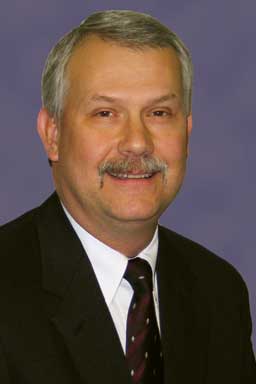From the Executive Director
Who’s watching now?
I own five televisions – all of which are of the analog persuasion (one is even black-and-white). Very soon now these will cease to work without a digital converter box. This is just another reminder that we live in a digital world that is overflowing with technological advancements. The possibilities created through these advancements are having an impact on almost every part of our daily life.
For the most part, these advancements are beneficial in some way. I marvel at how a video of my son’s basketball game can be digitally recorded, then stored and played back on my home computer. However, there are occasions when perhaps we wish technology was not so advanced or pervasively applied. We were given a stark reminder of that in 2008 when an undercover video was recorded in a sow unit in Iowa, documenting alleged animal abuse. Much to the delight of PETA (the instigators of the undercover operation), this video created a stir in the industry.
There have been other undercover videos of swine as well as other species. However, this particular video struck close to home for several reasons. Geographically it was less than 30 miles from the AASV office. In addition, the sow unit had close ties, both past and current, to veterinarians who are members of the AASV. Lastly, I was thrust into the role of a spokesperson for the industry. It was an up close and personal experience with several aspects of the news media.
The good news was that for the most part, the media personnel were friendly and not prejudicial in their questions or their reporting. Ultimately, the story persisted for only a couple of days, despite PETA’s attempts to keep it in the news. However, it did make it into the national news and into the consuming public’s view. It faded from public view due to other more pressing news, such as the economic and financial crisis. The video definitely raised the issue of how pigs are treated on the farm, and it brought certain production practices into question.
Animal handling, euthanasia, and castration are all seen on the video. PETA presented everything on the video as abuse and produced the video in a manner to depict it that way. We all know there are better and more humane ways of moving animals than beating them with gate rods. The language and verbal abuse recorded on the video were perhaps more damaging than the recorded actions. However, the PETA depiction of routine production practices as abuse is intellectually and scientifically dishonest.
When done properly, euthanasia of baby piglets by blunt-force trauma is humane. It results in rapid insensibility and consistent death. The training of personnel in proper application is essential. It is not aesthetically pleasing to perform or watch, and because of this, the veterinary profession must be constantly looking for and researching other humane methods of euthanasia for all sizes and ages of pigs. One interesting aspect of the video was the euthanasia of a sow which was done correctly. It was presented as part of the alleged abuse, but the euthanasia itself could not have been done any better. In an instance like this, we have to step up and point out the inconsistency and purposeful lies aimed at harming the industry.
Castration of piglets without anesthesia is another issue that is going to be brought up again in future campaigns against the pork industry. The science has shown us that rapidly performing the procedure and use of minimal handling decrease the stress on the animal. So far, the science has not shown any advantage to the use of anesthesia or analgesics in piglets. Once again, proper training of personnel and skill development can go a long way in the humane processing of pigs. We must staunchly defend the scientific truth that supports certain practices utilized in pork production.
Undercover videos and investigations are common tactics of anti-animal-agriculture groups such as PETA and HSUS. Unfortunately, these tactics are an effective means of casting doubt as to the care and handling of animals on farms. As much as we would like to ignore them, we cannot. The digital technology that makes this all possible is here to stay and will most likely become more advanced in the future. Short of requiring all personnel to work in the nude, I don’t believe we can ever be assured that undercover video is not being recorded.
When we accept that undercover video is a brutal fact for hog production today, our strategy becomes very straightforward. If we assume that at any given time someone may be watching how we handle and care for our animals, then we make sure that we are doing the right thing. If we have nothing to hide, then we will not care who is videotaping. Please notice that I said straightforward, not simple. In this day and age of large systems with large numbers of employees, it is not simple to make sure everyone is doing the right thing. It is not simple, but it is imperative.
Every video that is recorded, released, and celebrated by our opponents will have a cumulative effect over time. Our opponents count on this as part of their strategy to gradually wear down animal agriculture and give the public the perception that abuse is common and pervasive. It is up to us to not give them anything of interest to video record. It is up to us to make sure that everyone in the barn, and I do mean everyone, is doing the right thing at all times. We have to keep asking ourselves: Who’s watching now?
--Tom Burkgren, DVM

